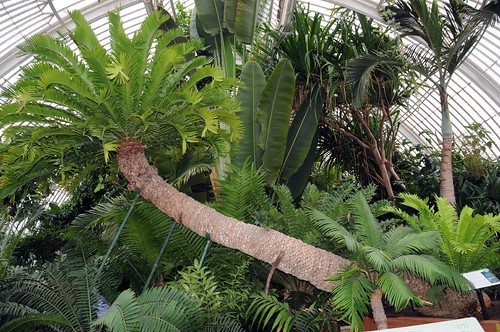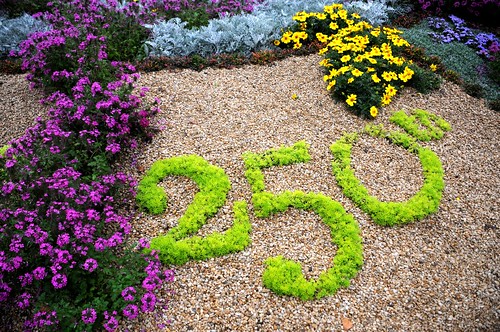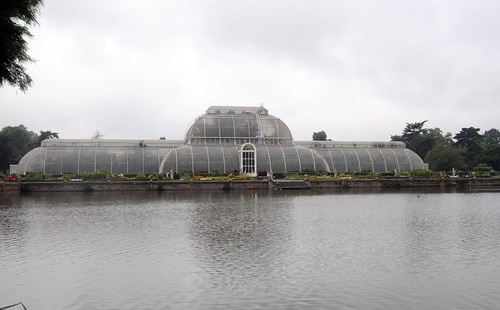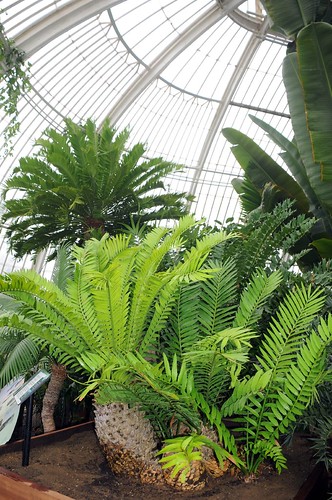Kew, together with its sister gardens at Wakehust Place and the Millenium Seed Bank is of tremendous importance, I have read that one in 8 of all plants species is represented in their collections. I could rant, as I previously have, about how Kew literally shaped the world's political and economic history in a way few modern visitors can imagine (think of how rubber, quinine and breadfruit shaped the world and how the Josephs, Banks and Hooker, altered the world's economies, maps and sciences) or about how it may yet help do so again (think perennial cereal crops, improved tropical forestry, new foods and the recovery of endangered species) but instead I'm not going to. Instead I'll simply share a couple of Kew's iconic views.
The Palm House was built just over 160 years ago by Richard Turner and Decimus Burton. It was the largest wrought iron building in the world at the time and the glass panels are hand blown. Originally heated by coal it has supplied bananas to Queens and kept rare tropical plants safe since its completion all whilst being one of the most spectacular looking buildings in London.

And this is its oldest resident. This Encephalartos altensteinii was brought to Kew in 1775 (ie 234 years ago; just 16 years after Kew's official creation!) and luxuriates in the title the world's oldest pot plant. In fact it was recently repotted (as you can see here) in an event that drew worldwide media coverage. It didn't reside in the Palm House forever though - it has moved around a fair bit; Kew used to have a dedicated cycad house (which is now some sort of edutainment playground (grrr) and has, I suppose, been replaced by the less than impressive evolution house).
The history of this plant is quite interesting. It was brought from the Eastern Cape by Francis Masson (one of Kew's early plant collectors) and misidentified as E. longifolius, an error only corrected after genetic tests.



1 comment:
It looks like the old Encephalartos altensteinii needs quite a number of crutches to hold its long neck up.
Post a Comment